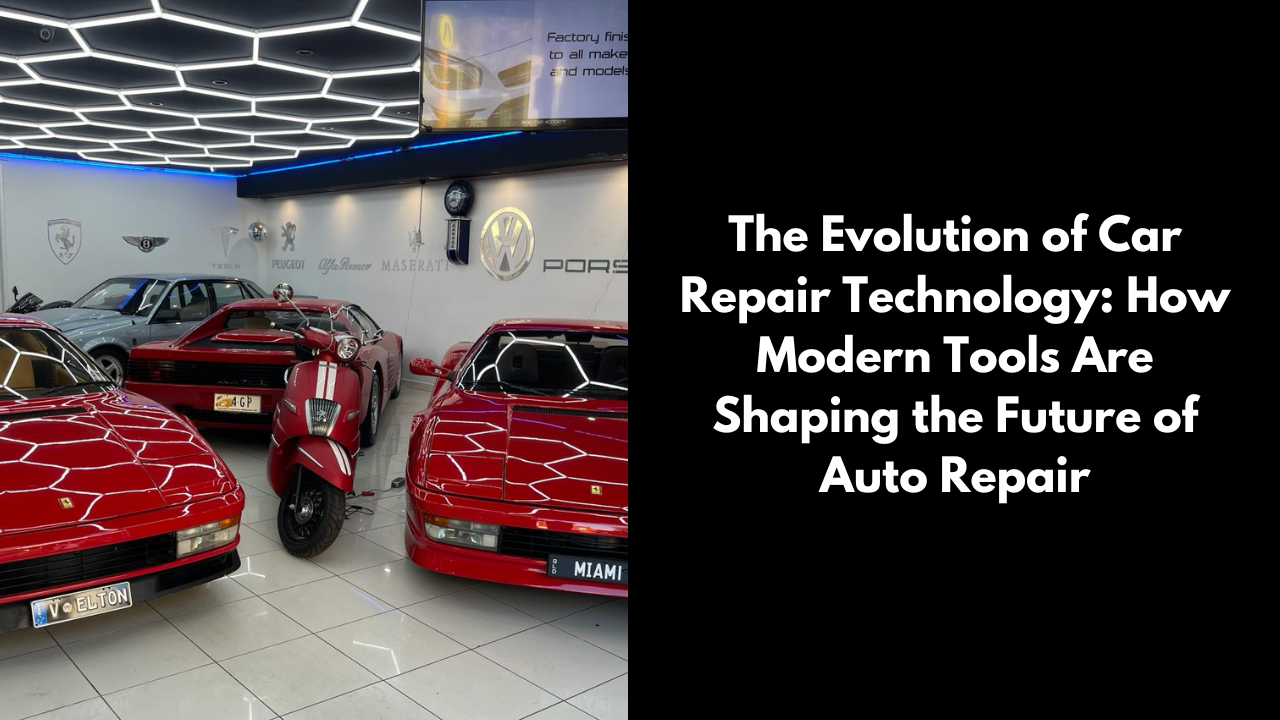The auto repair industry has always been a vital part of the automotive ecosystem, ensuring that vehicles run smoothly and safely on the road. However, the industry has seen remarkable transformations over the past few decades, primarily driven by technological advancements. From diagnostic tools to 3D printing and AI-based systems, modern technology is reshaping the way car repairs are conducted, leading to increased efficiency, accuracy, and customer satisfaction. This blog explores the evolution of car repair technology and how these innovations are shaping the future of the industry.
1. Advanced Diagnostic Tools: Precision at Your Fingertips
Gone are the days when mechanics had to rely solely on experience and intuition to diagnose car problems. Today, advanced diagnostic tools have revolutionized the way technicians identify and address issues. These tools, often connected to a vehicle’s onboard computer system, can quickly scan and detect problems with incredible precision. This not only speeds up the repair process but also minimizes the risk of misdiagnosis, saving both time and money for customers.
For example, OBD-II scanners, which are now standard in most repair shops, can read error codes from a vehicle’s computer and provide detailed information about what needs to be fixed. This technology allows mechanics to pinpoint issues with everything from the engine to the exhaust system, reducing guesswork and ensuring that repairs are done right the first time.
2. 3D Printing: Revolutionizing Parts Manufacturing
One of the most exciting developments in car repair technology is the rise of 3D printing. This technology has the potential to revolutionize the way replacement parts are manufactured and supplied. Instead of waiting for a specific part to be ordered and shipped, repair shops can now use 3D printers to create the part on-site, significantly reducing downtime for customers.
3D printing is particularly beneficial for older or rare vehicles where replacement parts may be difficult to find. By scanning the damaged part and creating a digital model, a new part can be printed in a matter of hours. This not only speeds up the repair process but also opens up new possibilities for customization and innovation in car repairs.
3. AI-Based Systems: Enhancing Efficiency and Accuracy
Artificial intelligence (AI) is making its mark on the auto repair industry, offering new ways to enhance efficiency and accuracy. AI-based systems can analyze vast amounts of data from previous repairs, customer feedback, and vehicle performance to predict potential issues before they occur. This predictive maintenance approach allows repair shops to address problems proactively, reducing the likelihood of major breakdowns and improving overall vehicle reliability.
Additionally, AI-driven systems can assist technicians in making more informed decisions during the repair process. For instance, AI can suggest the most effective repair techniques or recommend alternative solutions based on historical data, leading to better outcomes for customers.
4. The Future of Car Repairs: Remote Diagnostics and Repairs
As technology continues to advance, the future of car repairs may involve remote diagnostics and even remote repairs. With the rise of connected cars and the Internet of Things (IoT), vehicles can communicate with repair shops in real-time, allowing technicians to diagnose issues without the car ever leaving the driveway. This level of convenience is likely to appeal to busy customers who value time and efficiency.
In some cases, repairs themselves could be conducted remotely. Imagine a scenario where a software issue in a car’s computer system can be fixed over-the-air, similar to how software updates are delivered to smartphones. While this technology is still in its early stages, it holds great promise for the future of car repairs.
5. Preparing for the Future: Staying Ahead of the Curve
For repair shops and technicians, staying ahead of the curve is crucial in this rapidly evolving landscape. Investing in the latest tools and technology, as well as ongoing training, will be key to remaining competitive in the industry. Customers will increasingly seek out repair shops that offer modern solutions, and those who embrace these changes will be well-positioned for success.
In conclusion, the evolution of car repair technology is transforming the industry in ways that were unimaginable just a few years ago. From advanced diagnostic tools and 3D printing to AI-based systems and the potential for remote repairs, these innovations are enhancing the efficiency, accuracy, and convenience of car repairs. As technology continues to evolve, the future of auto repair looks bright, with endless possibilities for improving the customer experience and driving the industry forward.

